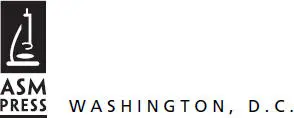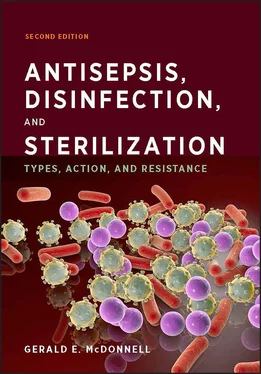158 151
159 152
160 153
161 154
162 155
163 156
164 157
165 158
166 159
167 160
168 161
169 162
170 163
171 165
172 166
173 167
174 168
175 169
176 170
177 171
178 172
179 173
180 174
181 175
182 176
183 177
184 178
185 179
186 180
187 181
188 182
189 183
190 184
191 185
192 186
193 187
194 188
195 189
196 191
197 192
198 193
199 194
200 195
201 196
202 197
203 198
204 199
205 200
206 201
207 202
208 203
209 204
210 205
211 206
212 207
213 208
214 209
215 210
216 211
217 212
218 213
219 214
220 215
221 217
222 218
223 219
224 220
225 221
226 222
227 223
228 224
229 225
230 226
231 227
232 228
233 229
234 230
235 231
236 232
237 233
238 234
239 235
240 236
241 237
242 238
243 239
244 240
245 241
246 242
247 243
248 244
249 245
250 246
251 247
252 248
253 249
254 250
255 251
256 253
257 254
258 255
259 256
260 257
261 258
262 259
263 260
264 261
265 262
266 263
267 264
268 265
269 266
270 267
271 268
272 269
273 270
274 271
275 272
276 273
277 274
278 275
279 276
280 277
281 278
282 279
283 280
284 281
285 282
286 283
287 284
288 285
289 286
290 287
291 288
292 289
293 290
294 291
295 292
296 293
297 294
298 295
299 296
300 297
301 298
302 299
303 300
304 301
305 302
306 303
307 304
308 305
309 306
310 307
311 308
312 309
313 310
314 311
315 312
316 313
317 314
318 315
319 316
320 317
321 318
322 319
323 320
324 321
325 322
326 323
327 324
328 325
329 326
330 327
331 328
332 329
333 330
334 331
335 332
336 333
337 334
338 335
339 336
340 337
341 338
342 339
343 340
344 341
345 342
346 343
347 344
348 345
349 346
350 347
351 348
352 349
353 350
354 351
355 352
356 353
357 354
358 355
359 356
360 357
361 358
362 359
363 360
364 361
365 362
ANTISEPSIS, DISINFECTION, AND STERILIZATION
TYPES, ACTION, AND RESISTANCE
GERALD E. McDONNELL, B.SC., PH.D.
Vice President of Research and EMEA Affairs
STERIS Limited
Basingstoke, Hampshire, United Kingdom

Address editorial correspondence to ASM Press, 1752 N St. NW, Washington, DC 20036-2904, USA
Send orders to ASM Press, P.O. Box 605, Herndon, VA 20172, USA
Phone: (800) 546-2416 or (703) 661-1593
Fax: (703) 661-1501
E-mail: books@asmusa.org
Online: estore.asm.org
Copyright © 2007 ASM Press
American Society for Microbiology
1752 N St. NW
Washington, DC 20036-2904
Library of Congress Cataloging-in-Publication Data
McDonnell, Gerald E.
Antisepsis, disinfection, and sterilization : types, action, and resistance / Gerald E. McDonnell.
p. ; cm.
Includes bibliographical references and index.
ISBN-13: 978-1-55581-392-5 (hardcover)
ISBN-10: 1-55581-392-5 (hardcover)
1. Sterilization. 2. Asepsis and antisepsis. 3. Disinfection and disinfectants. I. Title. [DNLM: 1. Antisepsis. 2. Disinfection. 3. Sterilization. WA 240 M478a 2007]
QR69.S75M33 2007
614.4′8—dc22 2006031854
All Rights Reserved
Cover photo:Scanning electron micrograph of a mixed biofilm of yeast and bacteria on an indwelling silicone rubber voice prosthesis after 3 to 4 months in a laryngectomized patient. Courtesy of Henny C. van der Mei and Henk J. Busscher (Department of Biomedical Engineering, University Medical Center Groningen and University of Groningen, Groningen, The Netherlands).
Dedicated to the memory of Professor A. Denver Russell
The control of microorganisms and microbial growth is an important consideration in medical, veterinary, dental, industrial, pharmaceutical, environmental, and food processing settings. This book has been developed to provide a basic understanding of the various chemical and physical antisepsis, disinfection, and sterilization methods used for infection prevention and contamination control. Disinfection and sterilization technologies are used for the control of microorganisms on surfaces, in products, or in air, while antisepsis is particularly associated with microbial reduction on the skin or mucous membranes. These varied applications play important roles in our daily lives, including the provision of safe drinking water, production and preservation of products, sterilization of medical devices, and decontamination of surfaces. The benefits of microbial control have been appreciated since ancient times—for example, in the use of heating, salts, and metals for preservation and wound treatment—despite the absence of any pure understanding of microbiology. Over the last 200 years, we have gained a greater appreciation of microorganisms and their roles in contamination and infection. In parallel, various chemical (referred to as “biocidal”) and physical antisepsis, disinfection, and sterilization methods have been developed and are widely used to render surfaces and products safe for use. Despite these advancements, microbial control issues continue to challenge us. Recent examples include the aftermath of the bioterrorism attacks in the United States; the alarming spread of viral and reemerging bacterial infections such as influenza viruses and tuberculosis, respectively; the more recent identification of newer infectious agents (notably prions and viroids); and the continuing concern of anti-infective (including antibiotic)-resistant microorganisms in hospitals and the general community.
As a background to this subject, an introduction to microbiology is provided, including a discussion of the spectrum of action, determination of efficacy, and common variables that affect the performance of antisepsis, disinfection, and sterilization methods. Disinfection and sterilization are considered as either chemical (biocide) or physical technologies. Chemical biocides include aldehydes, halogens, and phenolics, while physical processes include the use of heat, filtration, and radiation. For each biocide class or process, the various types are discussed, along with their applications, spectrum of activity, advantages, and disadvantages and a brief description of their modes of action. A wider range of methods is used for disinfection and antisepsis applications. Many of these are required to reduce the number of microorganisms, or even the number of certain types of microorganisms, to an acceptable level. In contrast, only a limited number of technologies are utilized for sterilization, which has the ultimate goal of rendering a surface, area, or substance free of all viable microbial contamination. For this reason, disinfection and sterilization methods are considered separately, with a specific chapter dedicated to the various biocides used as antiseptics and in antisepsis applications.
Читать дальше













